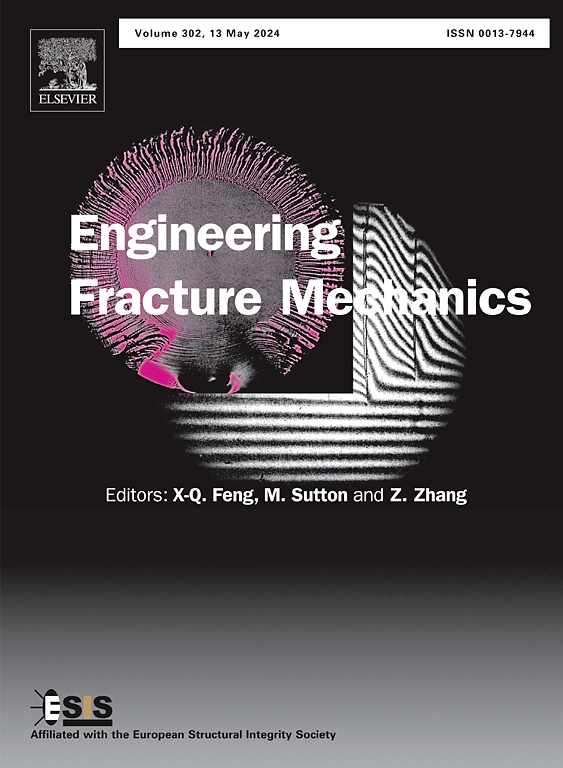A new formulation of SBFEM and its application to SIF computation of 3D crack
IF 4.7
2区 工程技术
Q1 MECHANICS
引用次数: 0
Abstract
This paper presents a novel scaling line center based scaled boundary finite element method for accurately computing stress intensity factors in three-dimensional fracture problems. Traditional methods, such as the finite element method and the boundary element method, often necessitate mesh refinement near crack fronts, which can result in computational inefficiencies and potential inaccuracies. Although scaled boundary finite element method provides advantages in addressing crack tip singularities, its existing formulations depend on a single scaling center point, which imposes geometric constraints and reduces accuracy in complex crack geometries. The proposed scaling line center based scaled boundary finite element overcomes these limitations by taking the crack front as a scaling line center, characterizing the singularity of stress field and improving accuracy of the computation of the stress intensity factor. The proposed methodology is theoretically formulated within a Hamiltonian framework and rigorously validated through a series of benchmark problems, including: (1) a cantilever beam subjected to concentrated loading, (2) single-edge crack specimens under both uniaxial tension and shear loading conditions, and (3) a lens-shaped crack embedded in a cubic domain under hydrostatic tension. Its ability to efficiently model complex three-dimensional cracks make it a valuable method for structural integrity assessment and failure analysis in fracture mechanics.
一种新的单轴有限元公式及其在三维裂纹SIF计算中的应用
本文提出了一种新的基于标度线中心的标度边界有限元方法,用于精确计算三维断裂问题中的应力强度因子。传统的方法,如有限元法和边界元法,往往需要在裂纹前缘附近进行网格细化,这可能导致计算效率低下和潜在的不准确性。尽管尺度边界有限元法在处理裂纹尖端奇点方面具有优势,但其现有的计算公式依赖于单一的尺度中心点,这对复杂的裂纹几何形状施加了几何约束,降低了精度。本文提出的基于标度线中心的标度边界有限元以裂纹前缘为标度线中心,表征了应力场的奇异性,提高了应力强度因子计算的精度,克服了上述局限性。提出的方法在哈密顿框架内进行了理论阐述,并通过一系列基准问题进行了严格验证,包括:(1)悬臂梁受集中加载;(2)单轴拉伸和剪切加载条件下的单边裂纹试件;(3)静水张力下嵌入立方域中的透镜状裂纹。它能够有效地模拟复杂的三维裂纹,使其成为断裂力学中结构完整性评估和失效分析的一种有价值的方法。
本文章由计算机程序翻译,如有差异,请以英文原文为准。
求助全文
约1分钟内获得全文
求助全文
来源期刊
CiteScore
8.70
自引率
13.00%
发文量
606
审稿时长
74 days
期刊介绍:
EFM covers a broad range of topics in fracture mechanics to be of interest and use to both researchers and practitioners. Contributions are welcome which address the fracture behavior of conventional engineering material systems as well as newly emerging material systems. Contributions on developments in the areas of mechanics and materials science strongly related to fracture mechanics are also welcome. Papers on fatigue are welcome if they treat the fatigue process using the methods of fracture mechanics.

 求助内容:
求助内容: 应助结果提醒方式:
应助结果提醒方式:


